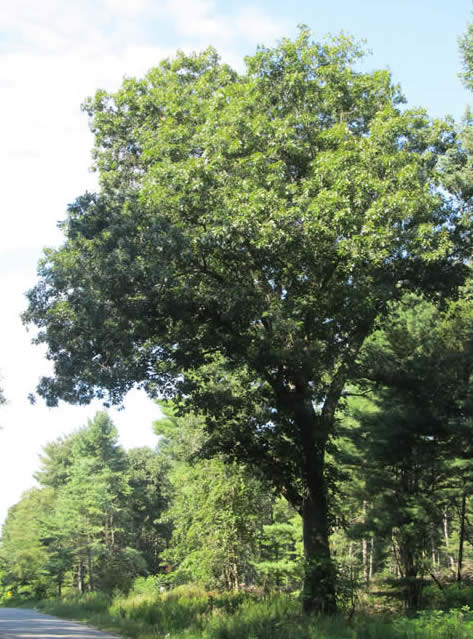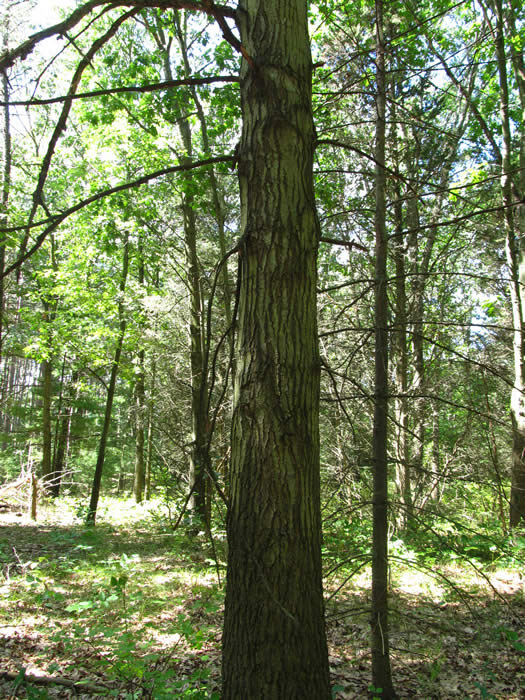black oak
black oak - Quercus velutina
Black oak trees are shade and competition intolerant and often found on dry, sandy soils. White-tailed deer, birds and other mammals help to disperse the seeds of this native oak. The inner bark contains a yellow pigment called quercitron which was a popular dye in the 1940s.

Black oak can grow up to 20 m high, with their trunks reaching almost 1 m in diameter. Photo by Shelley Hunt.

Black oak buds are 6-8 mm long and distinctly angled. Photo by Jesse Wolf.

The bark is dark grey and becomes darker with age, with deeply furrowed, rounded ridges. Photo by Shelley Hunt.

Ontario Tree Atlas map of non-planted Black Oak. 1995-1999.
References
Farrar, J.L.. 1995. Trees in Canada. Fitzhenry & Whiteside Ltd. Toronto. ON. 504 pp.
Kershaw, L. 2001. Trees in Ontario: Including tall shrubs. Lone Pine Publishing. Edmonton. AB. 240 pp
Muma, W. 2011. Ontario Trees and Shrubs. [Online] Available: www.ontariotrees.com
OMNR, 2011. Ontario Ministry of Natural Resources: Ontario Tree Atlas. [Online] Available: http://www.mnr.gov.on.ca/en/Business/ClimateChange/2ColumnSubPage/267027.html
OMNR, 2008. Ontario’s Biodiversity: Species at Risk.